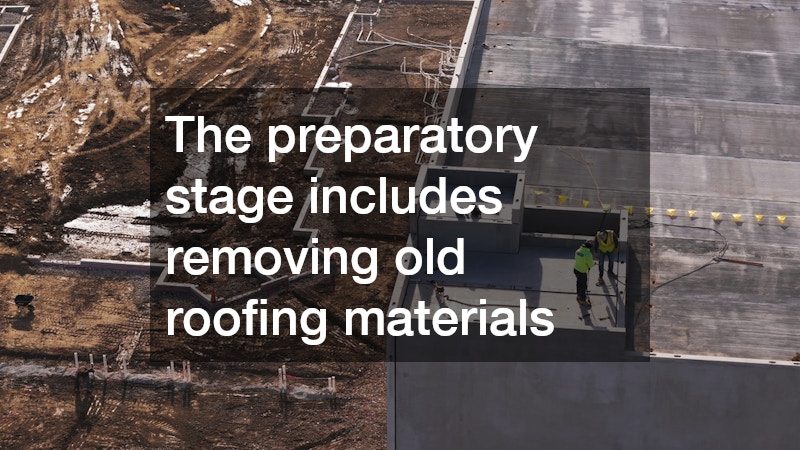Explore the installation process of commercial roofing with insights from professional commercial roofers. Understanding this process can help business owners make informed decisions about roof maintenance and replacement. An effective roof can enhance a building’s energy efficiency and protect its interior from environmental factors.
In the competitive landscape of commercial real estate, having a reliable roofing system is paramount. Not only does it safeguard the structure, but it also contributes to the overall aesthetics and value of the property. Without adequate knowledge of the roofing process, business owners may face unexpected challenges during installation or maintenance.
Engaging with commercial roofers can provide valuable insights and guidance throughout the decision-making process. Their expertise can help clarify the different roofing options available and the specific requirements for each. This understanding empowers business owners to make choices that align with their operational needs and budgetary constraints.
Types of Commercial Roofing Systems
Ethylene Propylene Diene Monomer (EPDM) has gained popularity for its durability and resistance to UV radiation. This rubber roofing system is known for its longevity and relatively easy installation, making it a common choice for commercial buildings.
Thermoplastic Polyolefin (TPO) is another widely used roofing membrane, prized for its energy efficiency. The reflective surface can significantly reduce heat absorption, benefiting buildings in warmer climates. This feature is often a crucial factor for owners looking to improve energy costs in their commercial property.
Modified bitumen roofing combines the best elements of traditional asphalt roofing and advanced materials for enhanced durability. This system can be installed using several methods, including torch-applied and adhesive, allowing flexibility based on the building’s structural design. Understanding these options aids in selecting the most suitable roofing system for the specific requirements of a commercial property.
The Length of the Commercial Roofing Installation Process
The initial stage typically involves a thorough assessment of the existing roof and structural integrity. This critical phase ensures that any underlying issues are addressed before installation begins.
Actual installation can vary significantly based on the roofing material chosen and the project’s complexity. Simple installations may take just a few days, while more elaborate systems could extend over several weeks. Weather conditions also play a vital role; inclement weather can delay progress and impact the overall timeline.
After installation, a final inspection is crucial to ensure that the project meets all building codes and standards. This phase may include additional adjustments or repairs based on the inspection findings. Understanding these timelines helps business owners plan for any disruptions and coordinate with their operations.
What to Expect During the Installation Process
The preparatory stage includes removing old roofing materials and repairing the underlying structure if necessary. This ensures a clean slate for the new roofing system and prevents future issues.
During installation, various methods are utilized depending on the selected roofing system. Roofers will expertly apply the chosen materials while ensuring they adhere properly for maximum durability. Ensuring compliance with safety standards and manufacturer guidelines is essential in this phase to avoid potential liabilities.
Post-installation, it’s vital to conduct a thorough inspection to verify that everything has been correctly installed. This inspection should check for potential issues, such as seams not properly sealed or inadequate drainage. Understanding what to expect during these steps can help business owners stay informed and engaged throughout the installation process.
Maintenance Required After Installation
Regular inspections can help identify potential issues before they escalate into costly repairs. Business owners should schedule these inspections at least twice a year, particularly after severe weather events.
Routine maintenance tasks may include cleaning debris from the roof surface and ensuring proper drainage. Clogged gutters and downspouts can lead to water pooling, potentially causing damage over time. By keeping the roof clean, business owners play a crucial role in preventing long-term issues.
Additionally, documenting maintenance activities can be beneficial for warranty claims or resale value. An organized record demonstrates proactive care, which can be an attractive selling point for potential buyers. Understanding these maintenance requirements fosters a long-lasting relationship between property management and roofing professionals.
Understanding the installation process of commercial roofing is vital for anyone considering roof work. By knowing what to expect, business owners can better prepare for and maintain their roofing systems. This knowledge equips them to make informed decisions, promoting the longevity and functionality of their commercial properties.
Taking the time to engage with professional roofers and explore the various systems available leads to wiser investment choices. Business owners are encouraged to prioritize quality and professional installation as part of their overall facilities management strategy. Enhancing their understanding of roofing can save both time and money in the long term.
The installation of a commercial roof is a significant undertaking that requires planning, knowledge, and care. By investing in quality roofing and ongoing maintenance, business owners can protect their investments and ensure the operational success of their enterprises.




